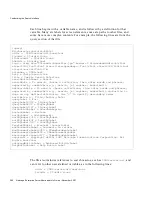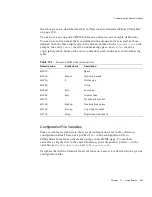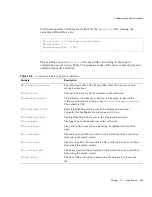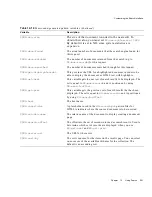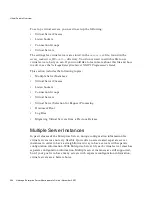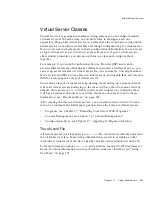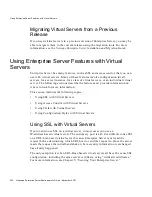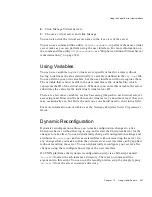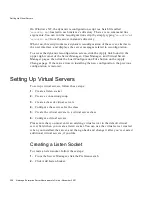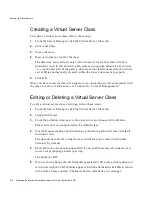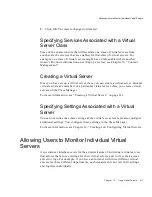
Virtual Servers Overview
Chapter
13
Using Virtual Servers
297
Virtual Server Classes
Virtual servers are grouped into classes. Using classes you can configure similar
virtual servers at the same time, so you don’t have to configure each one
separately. Though all virtual servers in a class share the same basic configuration
information, you can also set variables and change configuration per virtual server.
If you don’t want virtual servers to share configuration information, you can create
a single virtual server per virtual server class. However, if your virtual servers
share similar properties, you can group them in a class and configure them
together.
For example, if you work for an Internet Service Provider (ISP) and want to
provide different levels of hosting for different customers at different prices, you
can set up several classes of virtual servers for your customers. You might enable
Java servlets and JSPs for one class of virtual servers, and disable Java servlets and
JSPs for a less expensive class of virtual servers.
You create a class of virtual servers by naming it and setting up a document root,
where all virtual servers belonging to the class will have their document roots by
default. You can use the
$id
variable so that each virtual server within the class
will have a separate document root within the class’s document root. For more
information, see “Document Root,” on page 303.
After creating the class of virtual servers, you associate services with it. You can
turn on or configure the following types of services for a class of virtual servers:
•
Programs, see Chapter 15, “Extending Your Server With Programs.”
•
Content Management, see Chapter 16, “Content Management.”
•
Configuration Styes, see Chapter 17, “Applying Configuration Styles.”
The obj.conf File
All virtual servers in a class share an
obj.conf
file, which stores information about
the virtual server class. Some of that information is stored in variables, so that
individual virtual servers can have specific variable values substituted on the fly.
For more information about
obj.conf
and variables, see the NSAPI Programmer’s
Guide. For more information on using variables in the user interface, see “Using
Variables,” on page 307.
Summary of Contents for NETSCAPE ENTREPRISE SERVER 6.0 - ADMINISTRATOR
Page 1: ...Administrator s Guide Netscape Enterprise Server Version6 0 November 2001...
Page 18: ...18 Netscape Enterprise Server Administrator s Guide November 2001...
Page 26: ...26 Netscape Enterprise Server Administrator s Guide November 2001...
Page 48: ...Migrating a Server 48 Netscape Enterprise Server Administrator s Guide November 2001...
Page 50: ...50 Netscape Enterprise Server Administrator s Guide November 2001...
Page 146: ...146 Netscape Enterprise Server Administrator s Guide November 2001...
Page 242: ...242 Netscape Enterprise Server Administrator s Guide November 2001...
Page 294: ...294 Netscape Enterprise Server Administrator s Guide November 2001...
Page 332: ...Deleting a Virtual Server 332 Netscape Enterprise Server Administrator s Guide November 2001...
Page 378: ...378 Netscape Enterprise Server Administrator s Guide November 2001...
Page 396: ...Responses 396 Netscape Enterprise Server Administrator s Guide November 2001...
Page 414: ...Posting to JSPs 414 Netscape Enterprise Server Administrator s Guide November 2001...
Page 432: ...Further Information 432 Netscape Enterprise Server Administrator s Guide November 2001...
Page 444: ...444 Netscape Enterprise Server Administrator s Guide November 2001...




